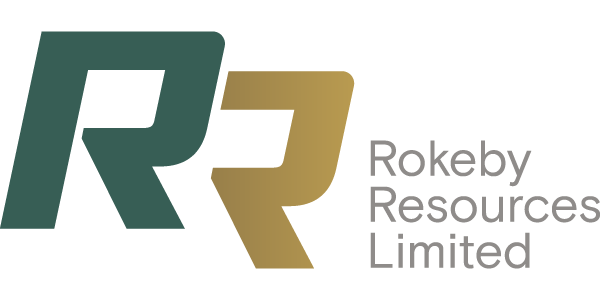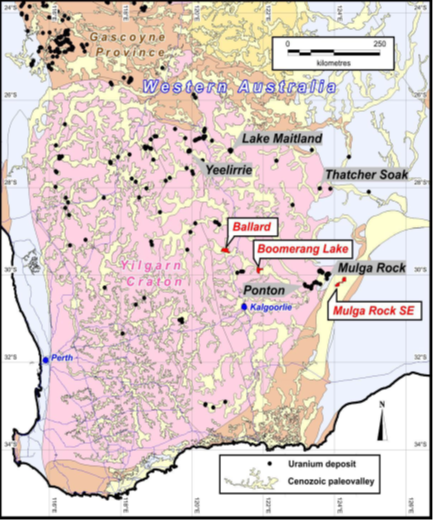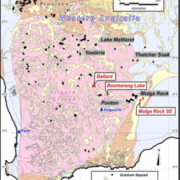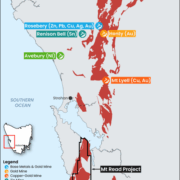Emerging Projects
Western Australian Exploration Licence Applications
Three exploration licences north and northeast of Kalgoorlie in Western Australia prospective for Uranium and Gold mineralisation.
- Project 1
- Mulga Rocks E28/3451
- {{content-2}}
- Project 2
- Boomerang Lake ELA29/1264; and
- {{content-2}}
- Project 3
- Ballard ELA31/1387
- {{content-2}}
The Mulga Rocks licence was recently granted and the other two remain under application.
- The regional geology of Ballard and Boomerang Lake comprises Archean granites and greenstone of the Yilgarn Craton. Prospectivity for uranium is associated with palaeochannels that drain granitoid terrain. The Mulga Southeast palaeochannel drains granitoid gneisses of the Albany-Fraser Province.
- Mulga Rocks covers palaeochannels southwest and northeast of Mulga Rock and Ponton, with uranium hosted in lignite and sandstone within Tertiary channels. These overlie Albany -Fraser gneisses and gabbos.
- Ballard and Boomerang Lakes cover Yilgarn granite between the greenstone terranes to the east and west. The overlying Lake Rebecca palaeochannel at Boomerang and Lake Ballard passes through the tenements.
- All three areas are considered prospective for palaeochannel-hosted uranium mineralisation, consistent with known occurrences across the Yilgarn where palaeodrainage drains granitoid terrains.
TASMANIA – Mt Read Project
- The Mt Read Project is located on the west coast of Tasmania, south of Macquarie Harbour, and consists of one exploration licence (EL04/2024) for 224km2.
- The region is globally significant, hosting numerous world-class discoveries and operation mines, including Hellyer, Mt Lyell, Henty, Renison Bell, Rosebery, and Avebury.
- The project lies within the Mount Read Volcanics, a Cambrian-aged belt that hosts multiple significant deposits, including Hellyer and Rosebery (Zn-Pb-Ag-A VHMS), Mt Lyell (Cu-Au), Henty (Au), Renison Bell (Sn) and Avebury (Ni).
- Previous exploration focused on copper-cobalt-gold mineralisation at the Thomas Creek Prospect, association with intrusive and volcanic rocks correlated to the Mount Read Volcanics. Previous drilling intersected broad low-grade zones and defined large geophysical anomalies.
- Much of the tenement remains largely untested, with modern geophysics and soil sampling identifying multiple zones with potential for porphyry and VHMS-style mineralisation, providing significant upside.
- Current work is focussed on reinterpreting data from a recently completed EM survey, with the objective of generating drill-ready targets.




